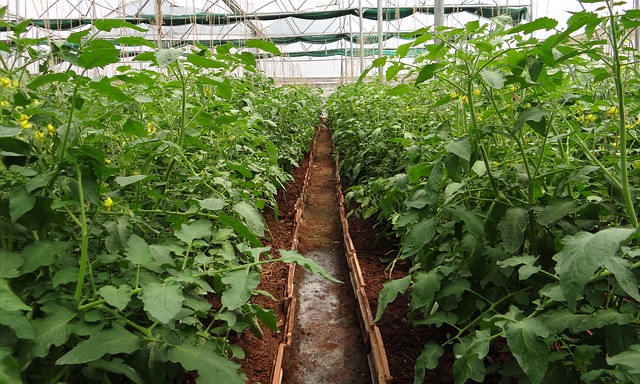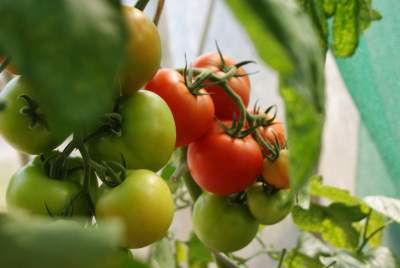Tomato plants are one of the most common houseplants for a variety of reasons, but with this comes the responsibility of taking their utmost care. Throughout the process, there can be a number of questions that pop up in one’s head.
One such common doubt that is asked by many home gardeners is “should I cut off yellow leaves on tomato plants or not?” Well, here is a simple answer. If you see the yellowing and dying of leaves soon after the first set of flowers of your tomato plant blossom, you can definitely cut it off.
However, this problem is much bigger to be answered in just a line and thus needs proper attention. Given below is a comprehensive overview of growing tomato plants with special emphasis on cutting off yellow leaves of the plant.
Cutting off yellow leaves on tomato plants

Before we dive into the details of yellow leaves on tomato plants, it is important to know the basics. Tomatoes come in two varied varieties, namely determinate and indeterminate.
Determinate tomatoes don’t really care much about the kind and process of removals. In fact, if anything, they do not even bother if the yellow leaves stay or go. However, an important note of consideration is that one should always remove yellow leaves off the determinate varieties if they are growing below the first set of flowers.
On the other hand, indeterminate tomatoes are ones that require special care while cutting off or carefully removing yellow leaves. The most eminent measure is to cut off the yellow leaves or suckers in a way that no wound is left behind on the plant.
The indeterminate variety of plants gains a huge benefit if the yellow leaves are removed and pruned. Moreover, they do not demonstrate any height constraints regarding the removal of yellow leaves.
Finally, all you need to know before cutting off yellow or dying leaves from your tomato plants is whether the variety of your plant is determinate or indeterminate. The rest will follow as mentioned above.
Also Read: Why Tomato Branches Curling Down?
Why are my tomato plant leaves turning yellow?
Often, the first step in curing a problem involves understanding the situations that stimulate it. All in all, there can be 7 broad underlying causes of your tomato plant leaves turning yellow. These are:
Overwatering
If you water your tomato plants way too often, then there’s a good chance that you are exposing it to problems like root rot, thereby making it susceptible to turn its leaves yellow and eventually die.
A fair way of knowing whether your plant needs water or not is to check the moisture levels of the soil before watering your plant. Make sure that the soil is not too soggy.
Also Read: Best Potting Soil for Tomatoes
Underwatering
Just as overwatering your plant can cause issues, underwatering often leads to your plant being deficient in nutrient absorption, thereby shortening its life. When your plant does not receive an adequate amount of water, it starts to drop the basic functions, and yellowing of leaves is one of them.
Compacted soil
If your tomato plants grow in a soil that is non-aerated, it doesn’t achieve the right amount of nutrients, thereby causing the leaves to turn yellow. A compacted soil does not give the plant enough space for root propagation, and limits the nutrient absorption. Yellow leaves on tomato plants indicate that you need to dig up your soil bed once in a few days to facilitate adequate nutrient supply.
Nutritional Deficiency
One of the most common contributors to yellow leaves of tomato plants is nutritional deficiency. After all, every cause that we have been talking about so long is indirectly related to problems in nutrient absorption. Nutrients help your plant to function effectively in the long run without any interference. However, sudden yellowing of leaves can mean lack of alkalinity, and other nutrients like nitrogen, potassium, calcium, and magnesium.
Also Read: How long can a tomato plant go without water?
Bacteria, Fungi, and pests
Bacteria, pests, and fungi exist to make it difficult for your plant to live. Tomato plants actually attract a lot of pests, making it difficult for gardeners to get rid of them. One of the most common fungal infections is the Septoria Leaf Spot that attacks the foliage of your plant, thereby making it weak. Fusarium Wilt is another common fungal infection impacting your tomato plants by directly attacking the root system. Infact, it is also the one responsible for fusarium root rot.
Inadequate Sunlight
A tomato plant, or any other plant for that matter, strives in proper sunlight that is not artificially induced. Exposing your plant to adequate hours of natural light helps it to prepare food and carry the basic living process. While too much sun exposure is also not recommended, keeping your plant entirely in the dark devoids it of its ability to produce natural green color of the leaves, thus explaining the yellow leaves.
A normal stage
If you have successfully checked the boxes for the aforementioned causes, then the most probable explanation is that it is just a normal stage in the growth cycle of your plant. So, there’s really nothing to worry about. However, you can take a few measures to prevent this from happening again. Most of this includes taking regular care of your plant in terms of its water and sunlight needs, checking the plant for any signs of fungal or bacterial infection, and so on.
Read this: How To Hand Pollinate Tomato Flowers?
How to cure yellow leaves on tomato plants?
Now that we know what all can cause the leaves to turn yellow, let us turn to look at a couple of most effective solutions that you can apply to treat your tomato plants:
Dealing with deficiencies
If your tomato plants are receiving an imbalanced alkalinity profile, then it is advised to add in a little dose of fertilizer, taking proper care of not overdoing it. It is recommended to select fertilizers that are optimally balanced in the NPK nutrient ratio.
To make up for the calcium and magnesium deficiency, try adding in chemical or natural compounds containing calcium or magnesium. This inexpensive technique can work wonders in the long term.
Check this: Why Are Bottom of Tomatoes Turning Black?
Watering your plants right
It can be difficult to identify when your plants need adequate water and in what quantities, you can do so in a trial and error manner, thereby helping you achieve a perfect understanding of your plant condition.
The primary consideration to bear in mind while scheduling the watering time table of your plants is to check the weather. A lot can depend on whether the climate is cold or sunny. If the sun is shining bright outside, then you might need to water your plant a few times during the day. Otherwise, watering it once every 3 days will do the job.
Solve the issue of root rot
Root rot is usually either a consequence of overwatering or a fungal infection. In either case, you need to make sure that the soil that you have planted your tomato yield in is porous and properly aerated, thus leaving enough room for root propagation and nutrient absorption. You can settle or mulch your soil to keep it properly aired and in good condition to avoid rotting of roots.
Treating fungi and other bacterial infections
One should be aware of how to deal with fungi and bacterial infections since they are usually unpredictable. The primary step is to detect the damaged parts of your plant.The most prevalent indicator of a fungal infection can be spotted in the form of abnormally looking leaf spots and sudden yellowing or browning of leaves.
To begin with, carefully separate the affected leaves from the rest of the plant, while taking special care that no healthy part gets detached. Next, mulch your soil frequently. This can prove to be a gamechanger. It is also advised to get rid of nightshade weeds from your backyard, since they attract infections.
An additional and most useful tip is to always keep natural insecticides and pesticides in close reach and spray them once every month to keep the pests at bay. This will ensure that the insects do not enter the periphery of your plant at any given point of time.
Treating Fusarium Wilts
Fusarium Wilts actually cause a lot of damage to your tomato plants, besides the leaves turning yellow, and that is why they deserve a separate section. Maintaining the pH levels of soil close to 6.5 is one of the most sustainable approaches to deal with the problems of fusarium wilts. Additionally, cater to the macro and micronutrient deficiencies of your plant since an unhealthy plant is automatically predisposed to wilts and infections.
Conclusion
Unfortunately, the presence of yellow leaves on tomato plants is not a narrow problem indicator and can mean a lot of things in a lot of situations. In order to make sure that you are dealing with the right kind of cause, having appropriate knowledge is a must.
To help you make this process easier, we have curated this small guide for yellowing of your tomato plant leaves. Now that you know all the probable causes with their treatments, there is no turning back.

